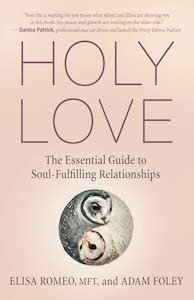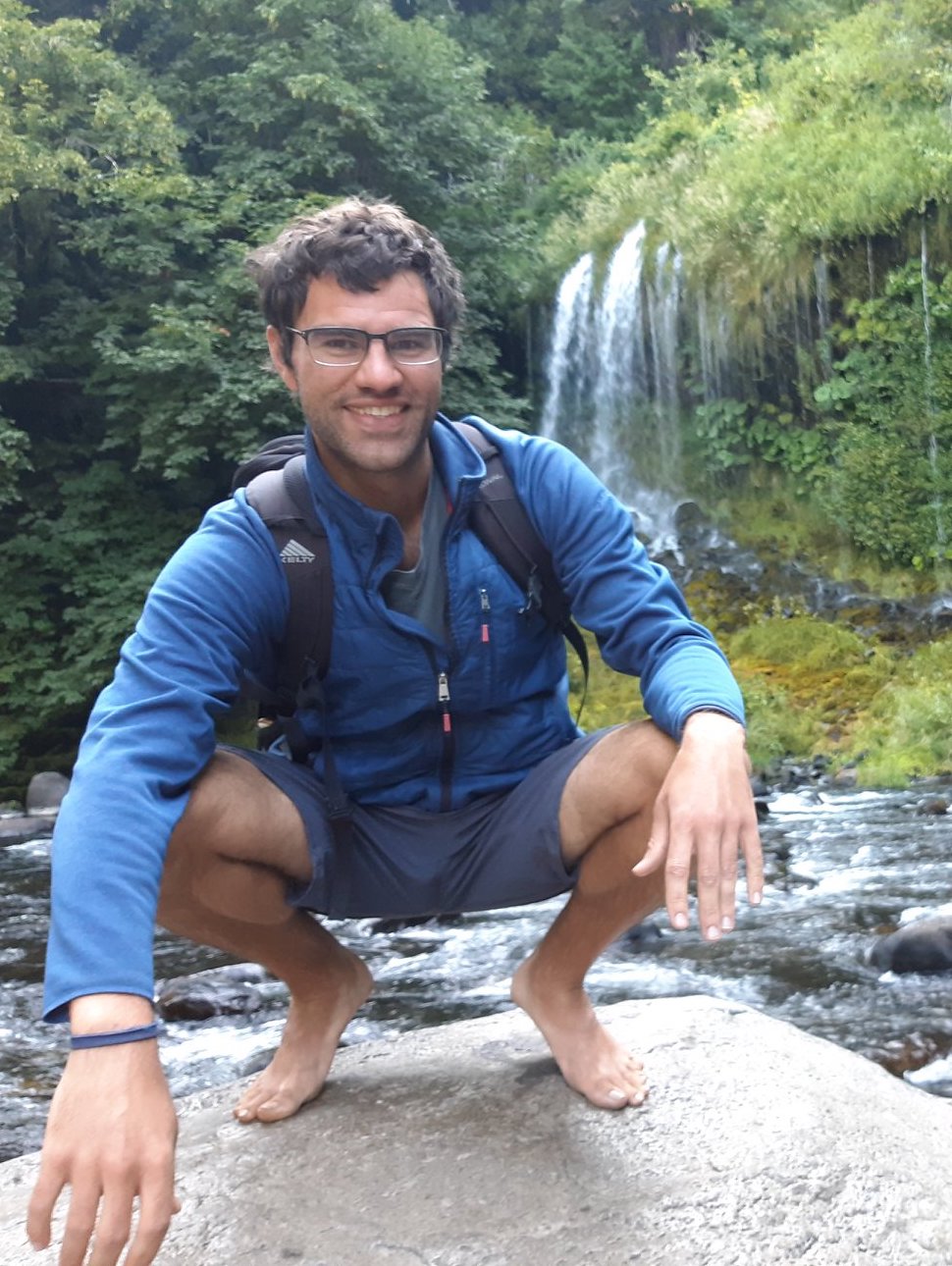
Holy Love: The Essential Guide to Soul-Fulfilling Relationships, by Elisa Romeo and Adam Foley
New World Library, 160868802X, 224 pages, February 2022
Holy Love: The Essential Guide to Soul-Fulfilling Relationships by Elisa Romeo and Adam Foley is a collaborative project between a couple who began their spiritual paths as individuals, but discovered the infinite depths of divine love through their relationship. As partners with children, Elisa and Adam help couples connect with their own Souls, and with one another’s, to transform relationships and bring about a state of mystic union with the divine love that flows outward from every Soul.
Reading through the first few sections of Holy Love, it’s easy to get the impression that, like so many other spiritual and New Age-y texts, this book is going to be a repetition of familiar ideas and platitudes. I’m happy to say, however, that I was pleasantly surprised by the depth of attention this book gives to elucidating the various relationships we have with other people, or with distinct aspects of ourselves.
The main focus of Holy Love is that we need to recognize how these different aspects – notably, the ego and the Soul – relate to one another within ourselves, as well as how they relate to these aspects within others. In fact, the central thesis of the book is that there are four unique kinds of relationships that can exist between two people. Whether the people in question are romantic partners, family members, friends, or perhaps even strangers, the four kinds of relationships are always in a dynamic interplay with one another.
Unfortunately, and for many reasons, only a couple – or even just one – of these relationships tends to be our primary focus. Of the four kinds of relationship – ego-to-ego, ego-to-Soul within ourselves, ego-to-their-Soul, and Soul-to-Soul – our socio-cultural practices often neglect all the others in favor of the first relationship: between one’s own ego and that of the other person. Although this may seem like a familiar topic, it’s the authors’ acceptance of ego, and its role in our relationships, that sets this book apart.
Drawing from a wide variety of spiritual practices, religions, depth psychology, and personal experiences, Romeo and Foley urge that the ego has a necessary place in our lives as mystics – a person who is holy, or whole, due to their immersion in love whose source lies beyond the material world. The authors advocate that every one of us is capable of being a mystic through our connection to divine love. Yet, if we try to overcome or erase the ego in pursuit of some sort of “spiritual purity,” we also lose a practical connection to others in the material world.
“[I]f we negate the human realm and rely solely on the spiritual connection, we may be at risk of minimizing the (very human) importance of showing up consistently for others, being accountable for our own behavior, and owning our personal responsibility for our inner development.”1
Although I could continue to explore the ins-and-outs of the four types of relationships discussed in Holy Love, the expositional and theoretical points of this book are just one aspect. Going hand-in-hand with discussion of the four relationships and their interplay are exercises at the end of almost every chapter in the book. These range from meditations, to journaling exercises, to conversations and activities with others. Holy Love goes even further than other books in that it also provides links to online resources, such as recorded meditations, created by the authors. This is a fantastic little bonus, as I find that listening to a meditation is usually a much more effective way to ease the monkey mind than trying to meditate while reading the text!
Even though such exercises are often found in books on spiritual development, Romeo and Foley take special care to construct the practical application of their approach around a central practice – journaling to one’s (or even another person’s) Soul. While a journaling practice can take many forms, I have rarely come across one which so heavily employs dialogue between the different aspects of the Self. I was thrilled to see that this really highlights Elisa’s background in depth psychology, where it is important for the distinct parts of the individual work toward integration, rather than subjugation, repression, etc.
From the personal accounts that appear throughout the book, directly writing and responding to the Soul creates the open, receptive state of being which enables us to hear the voice that is so often overshadowed by the ego. Instead of journaling to simply release emotional tension or clarify one’s thoughts and feelings, proposing questions directly to one’s Soul creates the space for the Soul itself to answer. Over time, this practice seems to reduce the interference from the ego, and its many surface-level concerns, allowing our Soul to grow stronger in its own voice and balance out the four relationships between ourselves and our partners.
Although the four types of relationships form the central theme of Holy Love, there are several chapters dedicated to the different ways to meet and communicate with the other’s Soul. I think this approach really helps to focus on the types of relationships which are more lacking in the contemporary world. By approaching communication with the Soul (one’s own, or that of one’s partner) from a variety of perspectives and modalities, we are presented with an open arena in which to explore the best route to strengthen these relationships.
Overall, I think Holy Love is a brilliant book to help couples develop their relationship along multiple dimensions. Even if you are not currently in a romantic relationship, this book is still worth the read, as it has more than enough material to assist in aligning the relationship between your own ego and Soul. Through practical examples, exercises, and relatable experiences, Romeo and Foley offer us fantastic guidance for how we might all realize the unlimited degree to which love can flow through us and into the world.

Zak has two master’s degrees in philosophy, from Brandeis University and University of California Santa Barbara. He is currently the lead editor for Dungeons in a Box, and he spends much of his time in the realm of fantasy crafting new plots and ensuring the adventure is in mechanical balance. When he’s not DMing, he also enjoys hiking, studying eastern philosophy, and playing board games.
